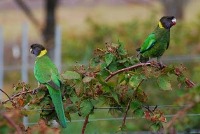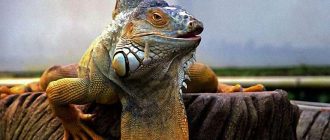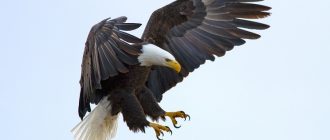Interested in Australian ringnecks? Want to know if you can have a ringneck as a pet? Read our guide for facts & information on this parrot native to Australia…
The Australian ringneck is a large parrot that has varying plumage colors and size depending in the different regions. Even though there are four subspecies, in two main groups the majority of the birds are green and have a yellow bang on the hind-neck which gives them their name. Among the various subspecies are:
The Mallee group that has a green head and neck. The Barnardi which is a subspecies of the Mallee group has a vivid yellow plumage underneath, a varied green and blow body and a red frontal band. The Cloncurry subspecies has more yellow and even pale turquoise around the face.
The Port Lincoln group birds have dark green hoods and are mainly green. The Twenty Eight Parrot subspecies has a red frontal band with green plumage over the body.
Then again there is also subspecies hybridization. The Australian ringnecks are otherwise quiet unless disturbed in which case they fly off with loud piercing sounds. The Australian ringnecks are exclusively found in the country; the Mallee group is seen in the eastern Northern Territory and in Northwestern Queensland and even inland Australia. The Port Lincoln group is a native of central and western arid areas of Australia. It is unusual to find ringnecks in the coastal areas in the eastern states of the country.
The birds are generally found in pairs or in small flocks, they can be seen over lightly timbered land, open woodlands and tree lined watercourses.
Even though there isn’t a set migratory pattern demonstrated by these birds, they may move to arid plains in response to rainfall.
Australian ringnecks primarily feed on the ground, but they can also be seen in trees and shrubs, usually in the morning or in the late afternoon, taking a nap in the heat of the day. Their preferred food items include seeds, nectar and insects and their larvae and some fruits, flowers. You can also often see them feeding on split grain on roadsides.
The eggs of Australian ringnecks can be found in hollows in living or dead trees on a bare base or on rotting wood dust. The birds enter through a hole in the trunk, a spout or a knothole. Like many other birds, the female incubates the eggs while she is fed by the male. The female only leaves the nest for a short time to be fed by the male; both parents feed the young and are often seen at the mouth of the hollow.





